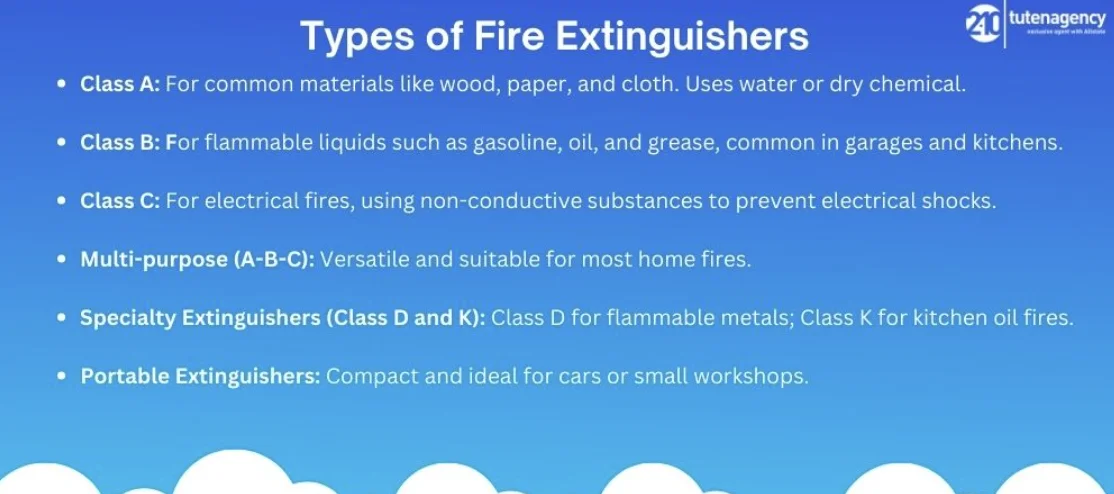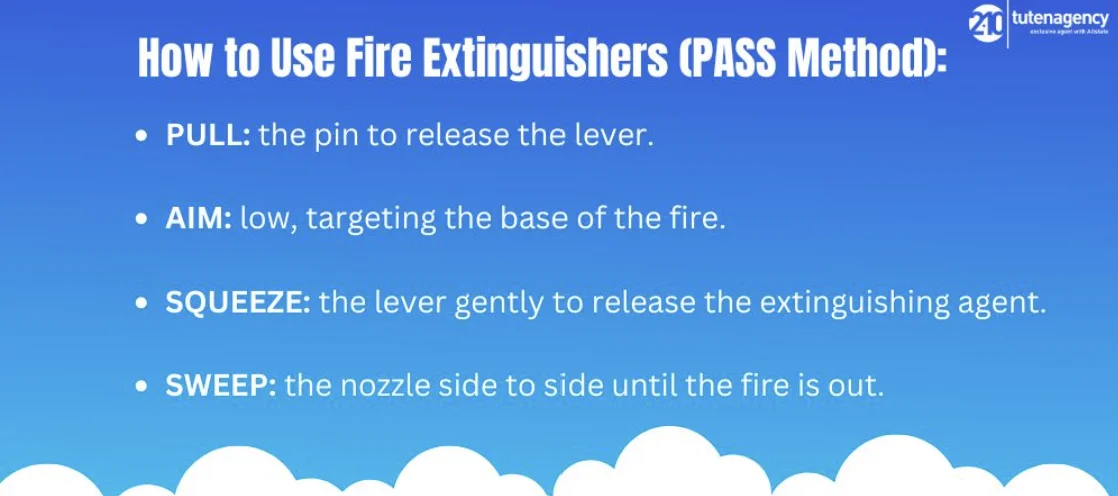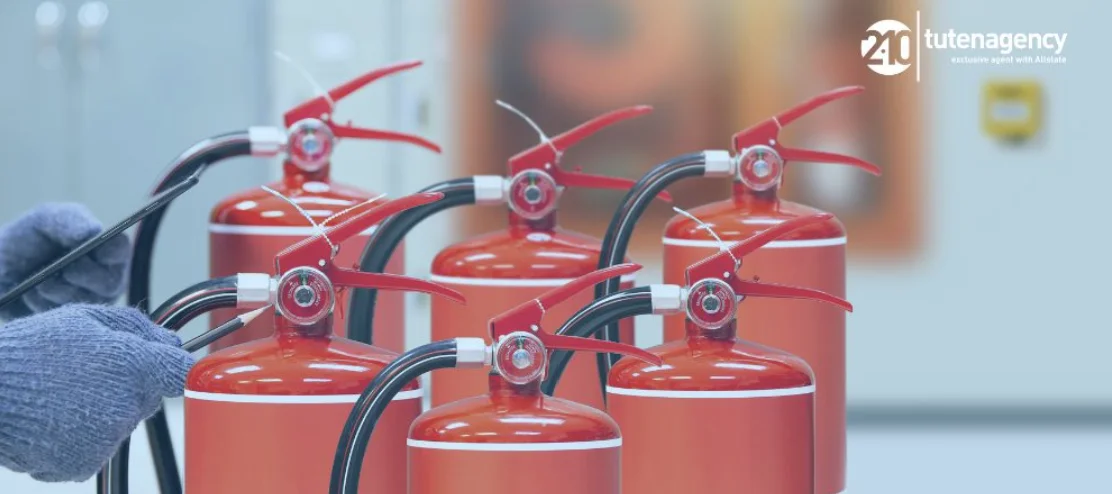Your home should be a sanctuary of safety for you and your family. A fire extinguisher is a vital safety device that plays an important role in maintaining its security. Fire extinguishers are crucial because they quickly respond to a fire, potentially saving lives and preventing extensive property damage. Understanding the importance of owning the right fire extinguisher and using it effectively are key components of home fire safety.
Types of Fire Extinguishers
To effectively protect your home from fires, it’s crucial to know the types of fire extinguishers available and what types of fires they are designed to combat.
-
Class A Extinguishers
These are used for common materials like wood, paper, and cloth—stuff we all have around our homes. Class A extinguishers might use water or a dry chemical to quench these fires by cooling the burning materials below their ignition temperature.
-
Class B Extinguishers
This type is designed for fires involving flammable liquids like gasoline, oil, and grease, frequently occurring in garages and kitchens. The extinguishing agents here smother the fire by cutting off the oxygen supply or stopping the chemical reaction that causes it.
-
Class C Extinguishers
Electrical fires from wires, fuse boxes, and appliances require Class C extinguishers filled with non-conductive substances. These extinguishers can safely put out the fire without conducting electricity back to the user.
-
Multi-purpose (A-B-C) Extinguishers
For convenience, the A-B-C extinguisher is designed to handle most fires in a household setting. It’s a versatile tool found at most home improvement stores.
-
Specialty Extinguishers (Class D and K)
Though not commonly needed in typical homes, Class D extinguishers are used for fires involving flammable metals. Class K is used primarily in kitchens to tackle fires caused by animal or vegetable oils during cooking.
-
Portable Extinguishers
A portable fire extinguisher such as the Element can be ideal for smaller or more specific uses, like in cars or small workshops. It’s easy to handle and effective at breaking a fire’s chain reaction at the molecular level.

Common Causes of Home Fires
To stop a fire effectively, you need to understand what causes them. Most home fires involve ordinary materials like oil or grease from cooking and flammable materials like cloth and paper. Early detection and control can prevent most fires from spreading.
Proper Usage of Fire Extinguishers
If you encounter a fire, remember to act quickly and use the correct extinguisher for the type of fire. The National Fire Protection Association recommends the PASS method:
- Pull the pin to release the operating lever.
- Aim low, directing the nozzle at the base of the fire.
- Squeeze the lever slowly to discharge the extinguishing agent.
- Sweep the nozzle from side to side, covering the entire fire until it is pulled out.

Maintaining Your Fire Extinguishers
Having a fire extinguisher is just the first step; maintaining it is crucial:
- Ensure it’s easily accessible in an emergency.
- Check that the pressure is at the recommended level.
- Regularly inspect for proper order and cleanliness to ensure functionality when needed.
Fire Safety Planning
Every home should have a fire escape plan that includes safe evacuation routes and ensures that all household members know what to do in the event of a fire. Smoke alarms should also be kept in working order to provide early warnings.
Summary
Selecting the appropriate fire extinguisher and mastering its use are critical steps toward ensuring the safety of your home. While having a fire extinguisher on hand is essential, knowing which type suits different situations can mean the difference between minor damage and a devastating loss. Equally important is the regular maintenance of your extinguishers, which includes checking accessibility, ensuring the pressure is at the recommended level, and inspecting for proper working conditions and cleanliness.
FAQs
How often should I replace my fire extinguisher?
Fire extinguishers should be replaced every 10-12 years, depending on the manufacturer’s recommendations. It’s also important to replace any extinguisher immediately if it has been used, even partially.
Are there different sizes of fire extinguishers? If so, which size is right for my home?
Yes, fire extinguishers come in various sizes. For home use, a medium-sized extinguisher (2.5 to 5 pounds) is typically sufficient and easier to handle, especially in an emergency.
Where is the best place to store a fire extinguisher in my home?
The best locations to store fire extinguishers are in areas where fires are likely to occur, such as the kitchen, garage, and near any heating appliances. Ensure they are easily accessible and not blocked by other items.
How do I dispose of an old fire extinguisher?
To dispose of an old fire extinguisher, check with your local waste management services for guidelines. Some areas have specific protocols for disposing of pressurized containers, and others may offer recycling programs.
Get the right coverage for your home with tutenagency
New tutenagency customers?
Quote homeowners insurance online or call (334) 502-5111 to insure your home.
Legal Disclaimer: ADVERTISING MATERIAL ONLY. Do not rely on this site or this article for legal or financial advice. The information provided on 210agency.com is strictly for educational purposes and to provide you with general educational information. Since state laws and financial regulations are subject to change, please schedule an appointment with an attorney or qualified financial advisor in your area to further discuss your personal situation. This public information is neither intended to, nor will it, create an attorney-client or financial representative relationship.

